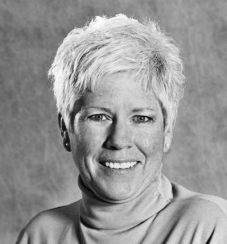Estrada in 1988 founded CERFnet, one of the original IP networks that serviced the academic and commercial communities in California. As executive director, she took the initial National Science Foundation funding of $2.8 million and grew the network from 25 sites to hundreds of sites.

Under her leadership, CERFnet also developed a number of notable firsts for the Internet, including the first deployment of dialup IP, accounting reports for customers and high quality service with 24/7 monitoring.
In 1993, she wrote ‘Connecting to the Internet, An O’Reilly Buyer’s Guide‘, a Barnes and Noble bestseller that gave practical advice on how to get the best Internet service.
As head of Aldea Communications, Estrada continues to consult on Internet infrastructure, and to investigate technologies and techniques needed to increase older-adult use of the Internet.
Estrada was named an Internet Hall of Fame Pioneer in 2014. We caught up with her recently to talk about her important contributions to Internet development.
IHOF: Tell me a little bit about how you got started working on the Internet?
SE: In the early ‘80s, I did X.75 (network) negotiations for AT&T. I wanted to return to California and I got a job interview at a newly-funded institution, the San Diego Supercomputer Center. I was hired in 1985 and began with creating a star network throughout the U.S. to connect participating universities with the supercomputer. Dennis Jennings, at the National Science Foundation, thought the supercomputer centers should all connect to each other and I provided two or three of the five links. In 1987, regional academic TCP/IP networks were beginning, and I wrote a successful proposal to connect Southern California institutions. We began work in 1988 and dedicated the network in 1989, when my daughter was 6 weeks old.
IHOF: What were some of the biggest hurdles you faced in moving the Internet into the commercial space?
SE: There were restrictions on the academic Internet—only government and research traffic was allowed. Education traffic was allowed a little later. My customers wanted commercial access, so I cornered Bill Schraeder from PSInet at an Interop meeting in San Jose and said we should interconnect since his network also didn’t restrict internal traffic to research and education. He reached out to Rick Adams at UUNet. We all agreed it was a good idea to interconnect and formed the first commercial Internet exchange. During this time, the academic network was reconfigured and we started discussing commercial traffic. However, their solution was onerous and late. Eventually, they also interconnected through the CIX, an online-based conferencing system.
IHOF: What was it like being a woman in this field? The technology and science fields have been and continue to be dominated by men. Were there are any particular challenges that you faced in being one of the few female leaders in this field?
SE: This one is deep. Not sure how to start. When you are in the middle of something, you don’t pay much attention to this. Looking back, especially with all the headlines about misogyny that dominated political coverage over the last year, the pain of being a woman in a man’s world has been more obvious.
IHOF: I know you founded FirstMile to increase broadband access. Are you still actively involved in that organization?
SE: FirstMile.US is in a lull right now. I’m not sure where we are headed. All of the positive changes that have occurred recently are being rolled back by the current FCC (Federal Communications Commission).
IHOF: When it comes to broadband access, how are we doing? What are some of the key achievements we have made in the U.S. and around the globe and where are we still lacking?
SE: Mobile is the leader. And with the 4G service, it has co-opted many rollouts. Many states have passed “no muni network” laws to provide cover to the large monopoly or duopolies. Internationally, there are still issues with getting Internet exchanges adopted in-country or amongst countries to drastically lower the cost of interconnections globally. Too many politics.
IHOF: I know you are still very involved with the Internet Society and advise companies on broadband development. What are the most pressing issues facing the Internet, companies and consumers today?
SE: Consumer protections and privacy are going to be key, but seem to be on the chopping block in the U.S.